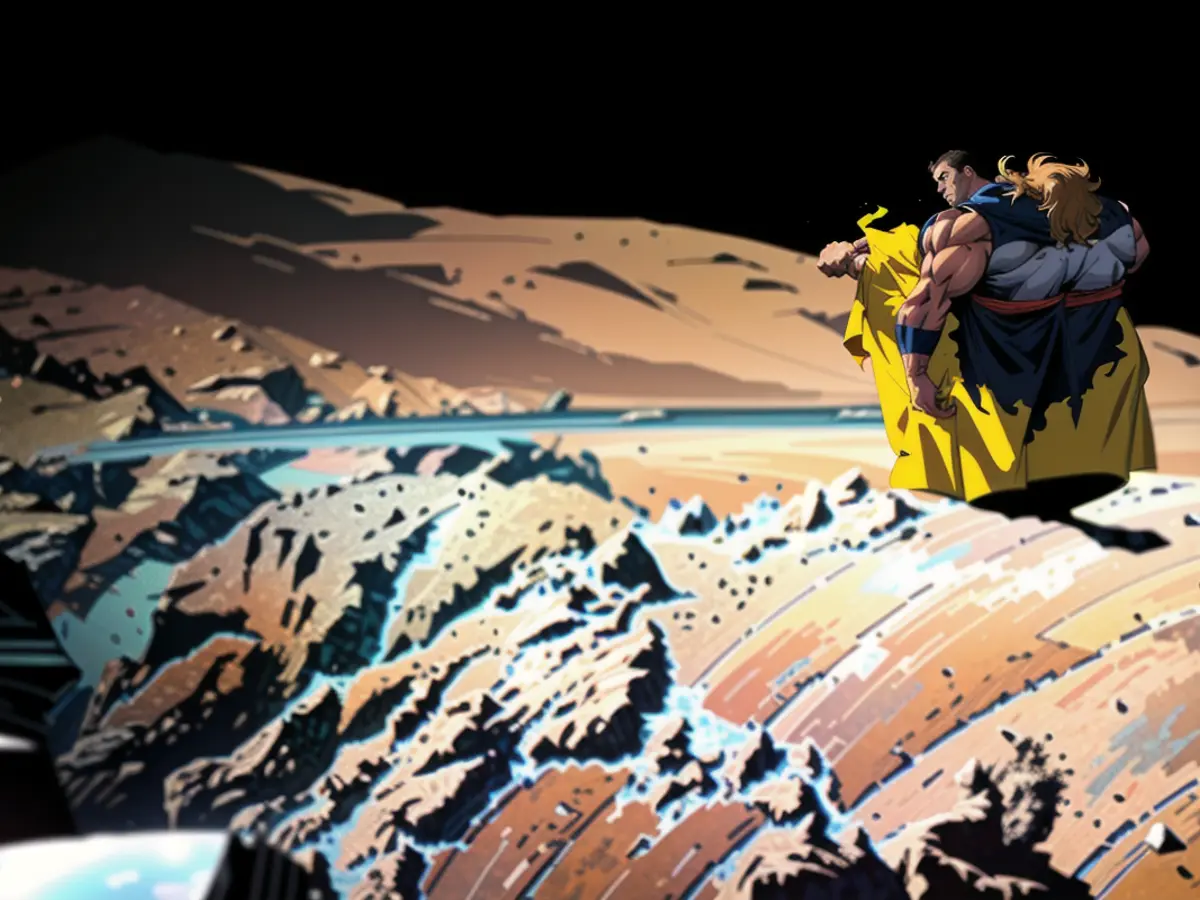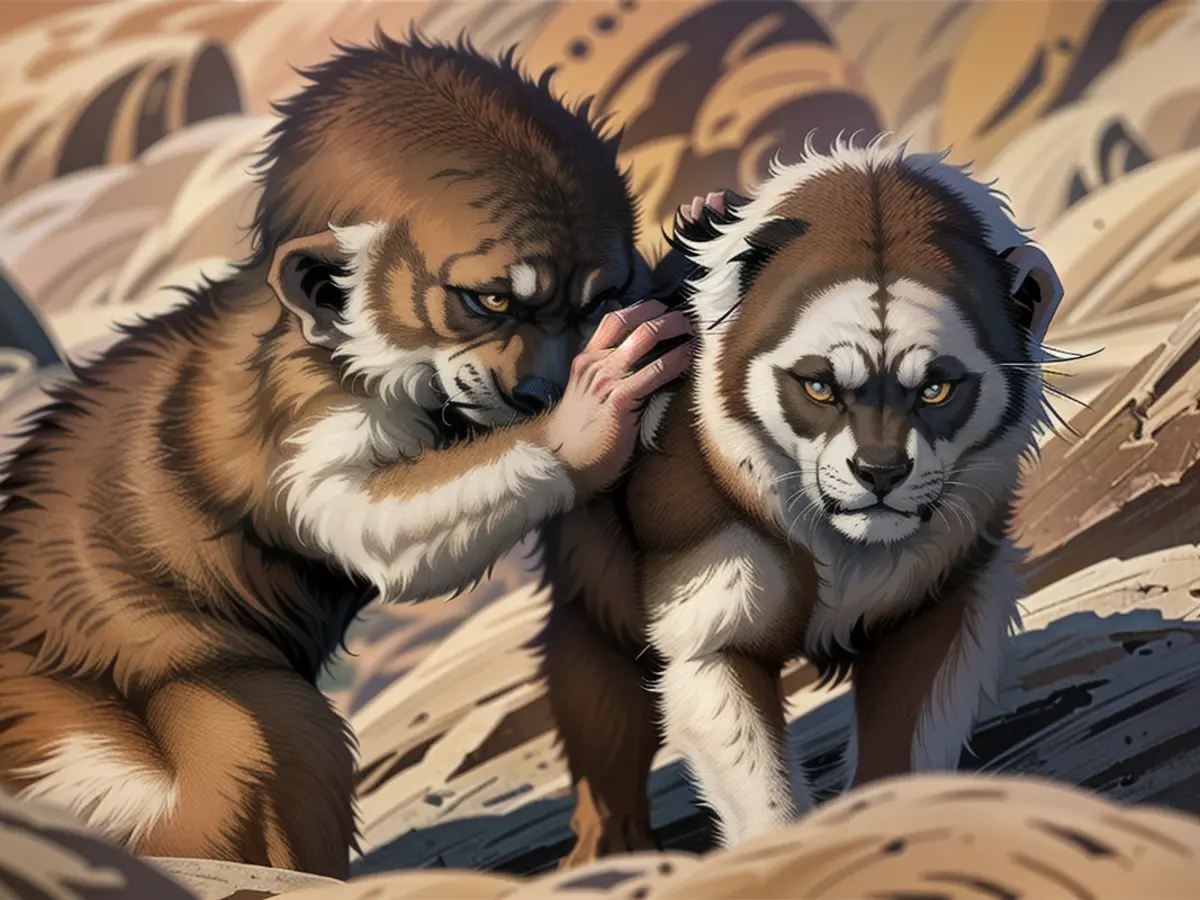Revealing the mysteries of the moon's uncharted region: China's newest expedition
China is embarking on another lunar mission, this time with the goal of bringing back the first samples from the moon's "hidden side" to Earth. The Chang'e-6 mission, launched last Friday, is planned to spend 53 days exploring the South Pole-Aitken basin to study its geology and topography while gathering samples from various areas across the crater.
The South Pole-Aitken basin is estimated to be the largest and oldest crater on the moon, with a diameter of approximately 1,550 miles (2,500 kilometers) and a depth of over 5 miles (8 kilometers). Scientists are eager to analyze these samples to better understand the moon's intriguing far side, which has not been studied as extensively as the near side.
"The far side of the moon is quite different from the near side," explained China National Space Administration's deputy chief designer, Li Chunlai. "It's essentially comprised of ancient lunar crust and highlands, so there are numerous scientific questions to be answered there."
However, during a recent NASA budget hearing, David Trone, a congressman, questioned why China was visiting the moon's "dark side." NASA Administrator Bill Nelson explained that "they are going to have a lander on the far side of the moon, which is the side that's always in darkness."
The term "dark side" has been used to describe the moon's hidden side, popularized by Pink Floyd's 1973 album of the same name. However, this term is somewhat misleading as the far side experiences day and night cycles like the near side and receives plenty of illumination.
Renu Malhotra, the Louise Foucar Marshall Science Research Professor and Regents Professor of Planetary Sciences at the University of Arizona in Tucson, stated that the far side's "mystery" stems from its lack of study. "People have always been interested in knowing what's on the other side of the mountain and the part they can't see... It's less mysterious than before due to the satellites we have sent and images we've obtained."
While scientists have gathered valuable data on the far side through spacecraft such as NASA's Lunar Reconnaissance Orbiter and the Yutu-2 lunar rover, returning samples to Earth would allow for more in-depth analysis, potentially solving some of the remaining mysteries about the moon's formation and composition.
Some key questions remain unanswered, despite many years of research.
"The reason the far side is so appealing is because it's so different from the side of the moon that we're familiar with," said Noah Petro, NASA project scientist for the Lunar Reconnaissance Orbiter and Artemis III mission. "Since humans have seen and recognized only one side of the moon for their entire history, the discovery of the far side was a revelation."
In 1959, the Soviet Union's Luna 3 probe captured the first images of the far side, revealing significantly different landscape features. "We saw this completely different hemisphere: not covered in large volcanic lava flows, more craters, and a thicker crust," Petro said. "This reveals a different story than the near side. This is why we need to bring back samples and have humans explore it."
Although the reason the near side of the moon always faces Earth is known, the exact mechanisms behind this have yet to be understood. "There's indeed some asymmetry between the side that faces us and the other side," spoke Renu Malhotra. "We lack understanding of these asymmetries and what caused them – that's a major scientific question."
As denoted by orbital data, the near side's thinner crust and abundance of volcanic deposits add to the list of unanswered questions surrounding the mysterious side of the moon.

"The moon's far side possesses a unique geochemical makeup with unusual heat-producing components, according to Denevi. While there are several theories regarding the distinction between the far and near sides, we haven't gathered the necessary data to support them. This makes exploring the far side and obtaining samples and geophysical readings a crucial step towards resolving this longstanding enigma."
Denevi collaborated on the design of the Endurance mission, a lunar rover that will embark on a lengthy journey across the South Pole-Aitken basin to gather samples and data before sending them to the Artemis landing zones close to the moon's southern pole. Human astronauts will then analyze the samples and select the most pertinent specimens for return to Earth.
Decoding lunar origins
One of the major questions scientists have been trying to answer is how the moon was formed. The popular theory suggests a cosmic collision resulted in a portion of Earth flying off and forming the moon.
Researchers also want to know how the moon's initial crust came into being. The dark areas on the moon are the result of volcanic flows, while the lighter areas represent the moon's primordial crust.
"We believe that the moon was once a completely molten substance, resembling an ocean of magma," Denevi explained. "As this solidified, minerals rose to the surface, resulting in the lighter terrain we see today."
The lunar surface is home to a multitude of impact craters, each carrying valuable information about the planet's early history and the time when life emerged on Earth, Denevi stated.
"When impacts took place on the moon, they also occurred on Earth simultaneously," Petro added. "Therefore, when we study the ancient events on the moon, we also gain insights into what was happening on Earth at the same time."
Exploring the South Pole-Aitken basin could be the first step in solving various lunar mysteries, Malhotra suggested. While scientists believe the crater emerged between 4.3 billion and 4.4 billion years ago, obtaining rock samples could provide a precise age.
"If we can determine the age of this depression," she stated, "it will likely uncover numerous secrets about the moon's history."

Read also:
- This will change in December
- Dikes withstand water masses so far - Scholz holds out the prospect of help
- Fireworks and parties ring in 2024 - turn of the year overshadowed by conflicts
- Attacks on ships in the Red Sea: shipping companies avoid important trade route
Source: edition.cnn.com







